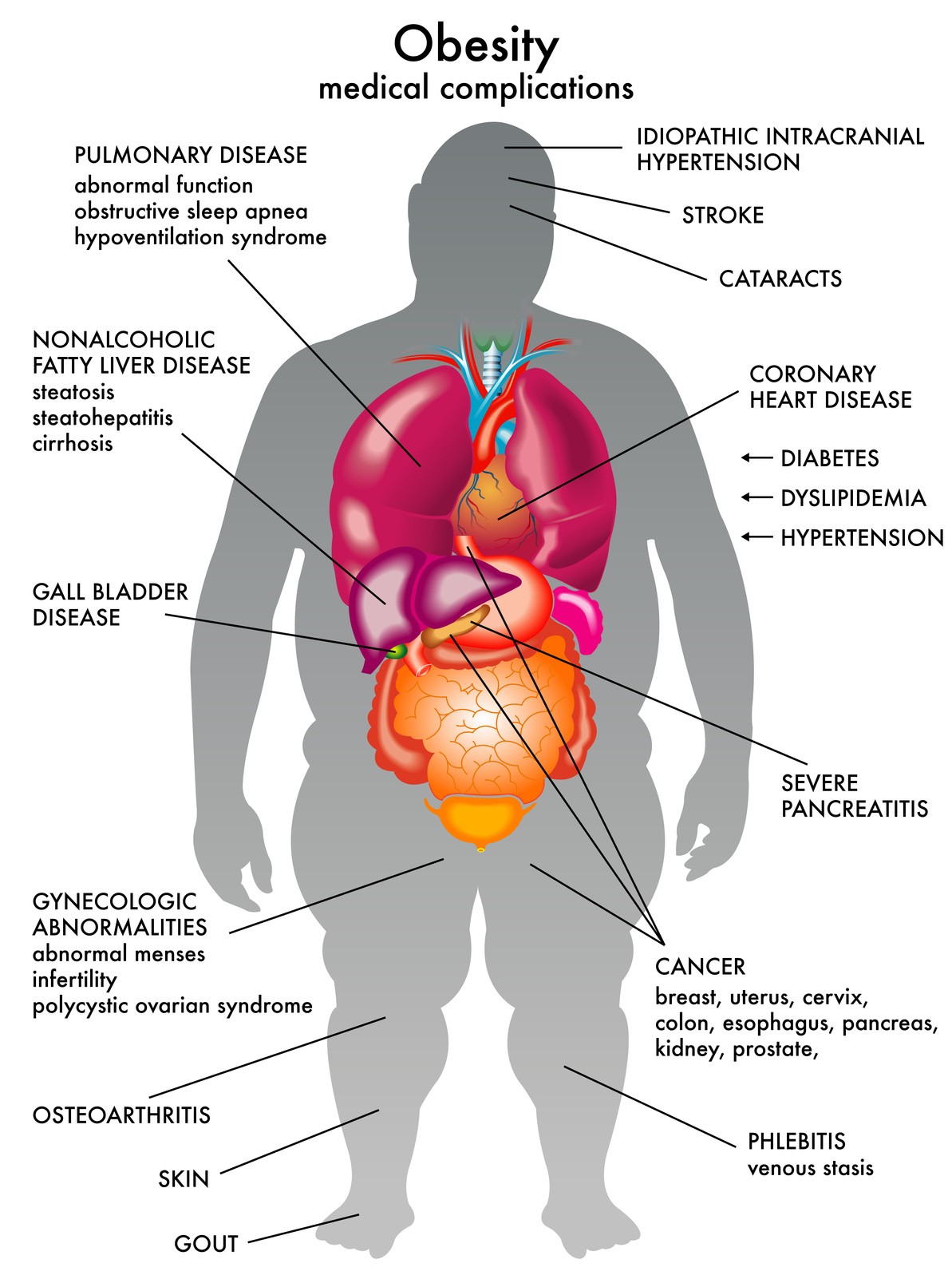
Contents
Body Fat, the Silent Killer
Obesity is a major global health problem. In the United States, approximately 300,000 deaths annually are related to obesity. It also increases the risk of developing chronic diseases like type II diabetes, insulin resistance, coronary heart disease, cerebrovascular disease, high blood pressure, gout, gallstones, colon cancer, sleep apnea, and nonalcoholic fatty liver disease (NAFLD).
Obesity is defined as excess body fat. The normal percentage of body fat is 25-30% in women and 18-23% in men. Women with over 30% body fat and men with over 25% body fat are considered obese. Alternatively, obesity can be determined using the body mass index (BMI). Normal weight is defined as a BMI between 20 and 25, overweight from 25 to 30, obesity from 30 to 35, significant obesity from 35 to 40, morbid obesity from 40 to 45, super obesity from 45 to 50, and super-morbid obesity greater than 50. In obese individuals with a BMI greater than 30, 80% of obesity-related deaths occur. To find out your BMI, refer to the Body Mass Index (BMI) Table for Adults and Teens.
What is nonalcoholic fatty liver disease (NAFLD)?
Nonalcoholic fatty liver disease is a range of liver diseases caused by insulin resistance, closely linked to obesity. Nonalcoholic fatty liver disease includes fatty liver (steatosis), nonalcoholic steatohepatitis (liver inflammation), and cirrhosis (irreversible liver scarring). The term "nonalcoholic" distinguishes these diseases from those caused by excessive alcohol consumption.
Alarming statistics about nonalcoholic fatty liver disease
Nonalcoholic fatty liver disease is prevalent in developed countries where sedentary lifestyles and high-calorie diets contribute to obesity, insulin resistance, and diabetes. It currently affects an estimated 10-24% of the global population and is the most common liver disease in the U.S. Approximately half of U.S. adults are overweight and one quarter are obese, totaling 29 million Americans with nonalcoholic fatty liver disease, including 6.4 million with nonalcoholic steatohepatitis (NASH). Nonalcoholic fatty liver disease is also on the rise in children in the U.S., with symptoms often going unnoticed until routine blood tests or ultrasounds reveal elevated liver enzymes or the presence of fat in the liver.
Treating nonalcoholic fatty liver disease and nonalcoholic steatohepatitis
Weight loss is essential for treating nonalcoholic fatty liver disease. Studies have shown that losing as little as 10% of body weight can significantly decrease liver enzyme levels. Medications like insulin-sensitizing agents and statins may also be used, but more research is needed to determine their effectiveness. Ultimately, the most effective treatment for obese individuals with nonalcoholic steatohepatitis is weight loss through diet and exercise. Promoting healthy eating habits and active lifestyles in children can help prevent and eliminate nonalcoholic fatty liver disease in the future.
Nonalcoholic fatty liver disease (NAFLD) and nonalcoholic steatohepatitis (NASH) At A Glance
- Fatty liver and its stages are common in nonalcoholic fatty liver disease (NAFLD).
- The main cause of nonalcoholic fatty liver disease is insulin resistance, often associated with obesity.
- Fatty liver is harmless and reversible with weight loss, while nonalcoholic steatohepatitis involves inflammation, cell destruction, and scarring of the liver.
- The risk factors and progression through the stages of nonalcoholic fatty liver disease are still unclear.
- Estimates suggest that among obese individuals and those with type II diabetes, 90% have fatty liver, 20% have nonalcoholic steatohepatitis, and 10% have cirrhosis.
- The diagnosis of nonalcoholic fatty liver disease is based on insulin resistance, elevated liver enzymes, and fatty liver observed on ultrasound.
- A liver biopsy can confirm the diagnosis and determine the severity of the disease.
- Weight loss and management of cholesterol, triglycerides, and blood sugar can benefit nonalcoholic fatty liver disease.


